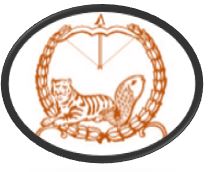An Introduction
To The Book
‘SCIENCE DURING
THE SANGAM AGE’
‘ANDRE SONNA
ARIVIYAL-SANGAKAALAM’
1/8
“Thamizh(Tamil) is not only the oldest
classical language that withstands the onslaught of time and is still spoken in
the day to day life, but also the first language humans ever spoke.”
Sangam era is the golden era of the
proud Tamilians. The rich tamil literature holds mirror up to the glory of the
life of the Tamils in that period.
The Tamils are the pioneer in the study of
science and technology. But owing to natural disasters we do not have any
concrete evidence. Yet there are many references to the signs of Scientific
Knowledge in Tamil literature.
The book titled
“Andre Sonna Ariviyal-Sangakaalam” (Science during Sangam Era) written by Ilakkuvanar Thiruvalluvan, reveals many facts of science prolonged that
prevailed even 2000 years back in Tamilnadu.
As
an introduction, let us see some of the facts found in the book.
There
are 58 chapters in this book.
TEṈPULATTĀR
The author begins the book from proto-history
period. In the chapter No. 1 he gives
explanation for the word ‘Teṉpulattār’(Thirukkural No. 43), as the people who
lost their lives in tsunami during pre-historic period. According to him
Thiruvalluvar wishes to praise those people.
FEMINISM
Feminism is a new subject to the modern
people.The Tamils gave equal rights to women, 3000 years back. The author
explains it in the chapters No. 2 and
3 and proves that Tamils
people are pioneer in womenology.
KNOWLEDGE OF THE LIFE OF PLANTS
In chapter No. 4, the author has
highlighted the fact that even 3000 years back tamil had a profound knowledge
of the life of plants. What our ancestors knew in the distant past was revealed
by Sir Jagdish Chandra Bose in the year
1902. He proved that the plants too have Life.
But
3000 years back the Tamil Grammarian TOLKĀPPIYAR revealed this scientific truth in his book TOLKĀPPIYAM.
He had already said,
The life of one
sense is that which has the sense of touch
The life of two
sense is that which has the sense of tongue in addition to the one
The life of
three sense is that which has the sense of nose in addition to the two
The life of
four sense is that which has the sense of eyes in addition to the three
The life of
five sense is that which has the sense of ears inaddition to the four
The life of six
sense is that which has the mind in addition to the five
Thus the
erudite scholars classified the living creatures.
and explained
the senses of creatures.
(tolkāppiyam 582)
ஒன்றறி வதுவே உற்றறி வதுவே
இரண்டறி வதுவே அதனொடு நாவே
மூன்றறி வதுவே அவற்றொடு மூக்கே
நான்கறி வதுவே அவற்றொடு கண்ணே
ஐந்தறி வதுவே அவற்றொடு செவியே
ஆறறி வதுவே அவற்றொடு மனமே
நேரிதின் உணர்ந்தோர் நெறிப்படுத்தினரே.
(தொல்காப்பியம்: 582)
The ‘pul’ and
the ‘maram’ are the creatures of one sense
There are
others also in their species
(tolkāppiyam 583)
புல்லும் மரமும் ஓரறிவினவே
பிறவும் உளவே அக்கிளை பிறப்பே
(தொல்காப்பியம்: 583)
This is not his own findings. According
to him the erudite scholars who shone before his periond had revealed the truth
that the plants have got life.
Science of
canning cool and hot liquids
There
are many canning centres in the cities like MATURAI established by our
government.
In the chapter 5, the author has
explained the sciene of
preserving that which is cold or hot.
A Thermas flask with a vacuum / Dewar flask / Dewar bottle / was Invented by Sir James Dewar in 1892.
But 2000 years back our Tamil
ancestors used flask type vessels to
preserve that which was cold or hot.
Poet ŌRIL PICCAIYĀR (the real name
of the poet is not known. He was named after his phrase he had uses in his
poem(It is like AṆIL ĀṬU MUṈṞILĀR) found in the anthology of Tamil Poems titled KUṞUNTOKAI
(Poem No 277). He has made mention of the cool or hot water-saving pot as CĒMACCEPPU.(Semam means preservation and cheppu
means container.)
Prof. G.MARIA JOSEPH XAVIOR





